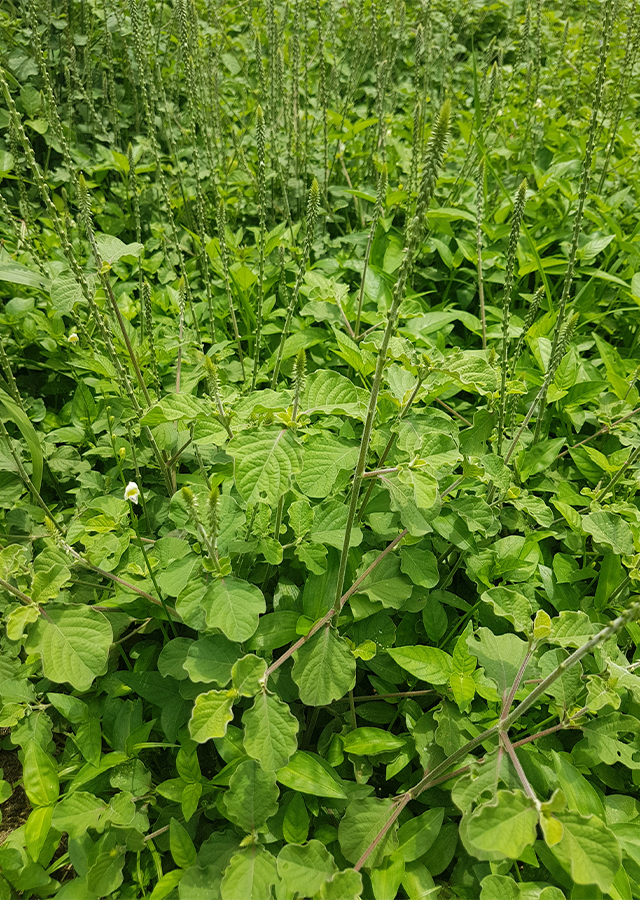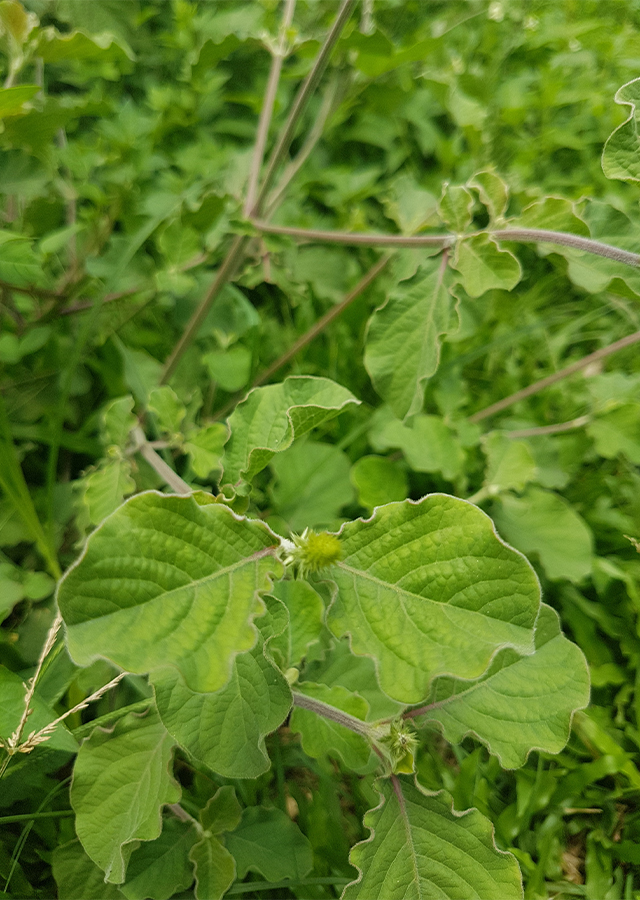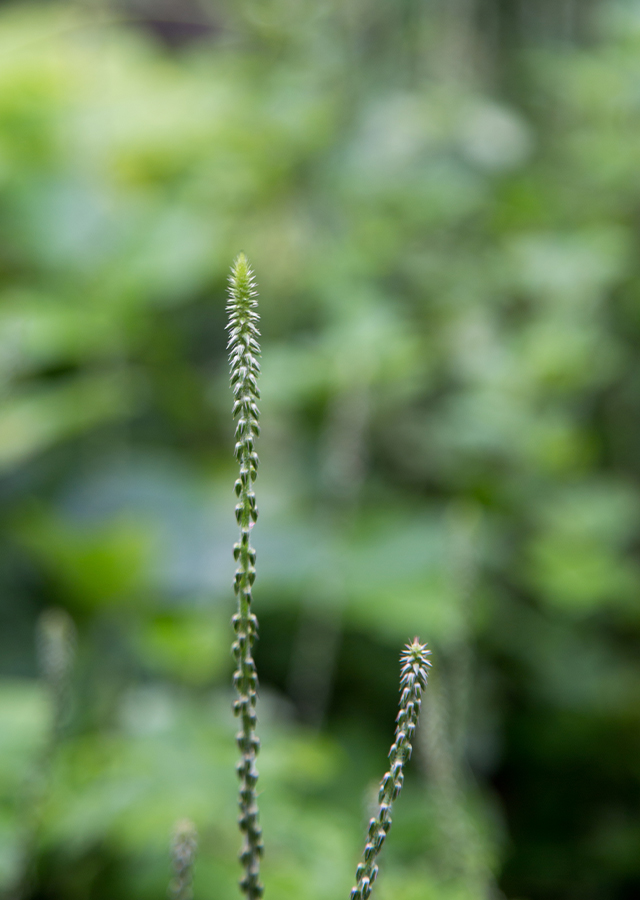Prickly Chaff Flower
Achyranthes aspera L.
Amaranthaceae
Location in our garden
Principal



Synonym
Cadelaria punctata Raf.
Centrostachys aspera (L.) Standl.
Stachyarpagophora aspera (L.) M.Gómez
Habitus
Herbaceous. Herbaceous annual to perennial plant, it can grow from 30-200 cm tall
Part Used
Leaves
Seeds
Fruit
Roots
Sap
Growing Requirements
Full Sunshine
Habitat
Riverbanks
Forest
Coastal
Roadside
Grassland
Overview
It is probably indigenous to South-East Asia and Africa and now it is a ubiquitous weed, through the tropics and subtropics. It is an important medicinal plant in parts of Asia, and as a food crop in China. It has diuretic activity, probably due to the precence of a large quantity of potasium
salt.
Vernacular Names
Co xuoc (Vietnamese), Latkana (Hindi), Spreublume (German), Achyranthe rude (French), Kunjar (Indian), Hangod (Philippines), Dao gou cao (Chinese), jarong, sangketan (Indonesia).
Agroecology
A. aspera occur as a ruderal often in sunny, dry localities, in regions with a well drained in rainy season, along road side and in waste place , from sea-level up to 2500 m altitude. It is suitable on sandy, loamy and clay soils.
Morphology
- Stem - angular, ribbed, stiff, nodes thickened, variably pubescent, reddish brown.
- Leaves - opposite, simple; petiole present; stipule absent, ovate-obovate or elliptical-oblong, glabrous to densely hairy.
- Flower - bisexual, solitary, deflexed after anthesis, spike terminal and axillary, up to 75 cm long, rachis stiff, ribbed, more or less densely white hairy, flower has five white to pink or greenish tepals and five white filaments.
- Fruit - capsules, orange to reddish purple or brown, 1-3 mm long. Ovary is 1-seeded.
- Seed - solitary, ovoid, brown, 2 to 3 mm long.
Cultivation
Generative propagation is by seed. Seedling with epigeal germination. The seeds germinate equally under light, shade and dark conditions. It can be found flowering throughout the year when sufficient water is available.
Chemical Constituents
Root contains water soluble alkaloid achyranthine, triterpen oleanolic acid, glycosides. The shoot are rich in alkanes, e.g. 17-pentatriacontanol, tritriacontanol, and 36,4 7 -dihydroxyhenpentacontan-4-one. Seeds contains a series of triterpene saponins (Saponins A-D), oleanolic acid, glucose, galactose, xylose and rhamnose.
Traditional Medicinal Uses
- The leaves are applied to wounds, and to mature abscesses and boils.
- A decoction of the root is drunk for diuretic, rheumatism, stomach-ache, menstruation pain , absence of menstruation or as an abortifacient. The sap from the plant is taken for dysentery and rheumatism.
- Seeds are used for treating jaundice. Poultice of leaves is used for insect and snake bites.
- All extracts showed moderate larvicidal effects against A. aegypti and C. quinquefasciatus.
Part Used
Reference Sources
- CABI. (2012). Invasive Species Compendium. Achyranthes aspera (devil's horsewhip). https://www.cabi.org/isc/datasheet/2664. 08-02-2021.
- Fern, Ken. (2014). Useful Tropical Plants. Achyranthes aspera. http://tropical.theferns.info/viewtropical.php?id=Achyranthes+aspera. 08-02-2021.
- Raymakers, J and Schmelzer, GH. 2002. Achyranthes L. In: van Valkenburg, J.L.C.H. and Bunyapraphatsara, N. (Editors): Plant Resources of South-East Asia No 12(2). Medicinal and poisonous plants 2. Prosea Foundation, Bogor, Indonesia. p 39-44
- StuartXchange. (2015). Philippine Medicinal Plants. Hangod. http://www.stuartxchange.org/Hangod. 08-02-2021.


